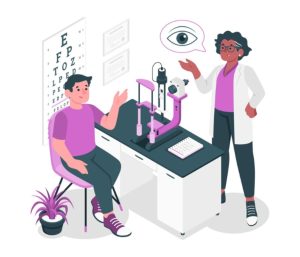How to Optimize Images for Your Website

Optimizing images for your website is something most people are not 100% sure how to do. This process is not as simple as opening your photo album on your computer.
When you optimize images for a website, this means editing and resizing them. This process usually consists of changing the image within computer software. You can also think of optimizing images like scaling a photograph.
Here is a short guide on how to optimize images for your website:
Table of Contents
Compress Your Images Before Uploading
Optimizing images for your website is important to ensure they are fast loading and don’t slow down the performance of your site. The first step to optimizing an image is to compress it before uploading. Compressing your images can reduce the file size without compromising the visuals in the picture.
Here are some tips for compressing your images before uploading:
- Use the right format – use an image format that supports compression, such as JPEG and PNG
- Keep the file size small – aim for a file size of less than 200KB for optimal website performance
- Use an online tool – there are plenty of online tools to help you compress your image
- Set quality levels – adjust the quality settings on your images to get the right balance between file size and quality
Following these steps will help ensure that the images on your website remain optimized, high quality, and fast loading. This will also improve the user experience and will improve your site’s speed to perform better.
Select the Right Image Format and Size
In image optimization, the right image format and size are essential. JPG format is ideal for digital photography and can be compressed while still keeping good quality.
PNG format is great for graphics that must have a transparent background or text, as it provides more detail and a better color display. SVG can be us for sharp vector graphics. Furthermore, all these formats should be in a maximum of 500KB for quick loading.
Incorporate Image Alts and Titles
Incorporating image titles and alts will also make your site more accessible to people. It will also help search engine spiders find them more.
Alt attributes describe the image and provide search engines with a textual representation of the image. In comparison, title attributes provide more text that can appear when users hover over the image. You can also use a banner template here to ensure image titles and alt have the right format.
Utilize CDNs to Optimize Image Delivery
When it comes to optimizing images for your website, utilizing CDN (Content Delivery Networks) can be used. It can reduce page lazy load time and improve website performance.
CDNs allow images to be served from a global network of servers located close to the user’s location. This results in faster loading times and a better user experience.
It can also help reduce server load, reduce bandwidth costs, and ensure content availability. Be sure to select one that delivers content from servers that are close to your website visitors. And configure caching of content for maximum performance and cost savings.
Follow These Tips on How to Optimize Images for Websites Today
Optimizing images for a website should result in faster loading and better performance. Taking the time to size images, compress files, and use caching will benefit the user experience.
So, don’t wait – start optimizing your website images now to improve user experience and reap the rewards!
Found this article helpful? Browse around the rest of this section for informative content.
Read Also: Best Ways to Improve Your Website Rankings




